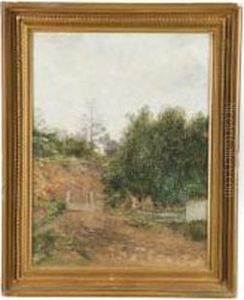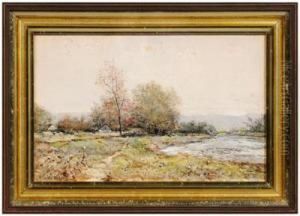Alfred S. Wall Paintings
Alfred S. Wall, an artist whose name resonates with the richness of American art history, was born in 1825. He was a figure whose life spanned the majority of the 19th century, a period marked by significant transformations in the United States, both culturally and socially. Wall's contributions to the art world are nestled within the broader narrative of American landscape and portrait painting, a testament to the evolving styles and interests of the era.
Wall's artistic journey is reflective of the broader trends in American art during his lifetime. The 19th century was a time of exploration, not just of the physical landscapes but also of artistic boundaries. Wall, like many of his contemporaries, was deeply influenced by the Hudson River School, known for its romantic and somewhat idealized depictions of the American landscape. His works, however, were not mere imitations of the popular style; rather, they embodied a personal interpretation of the scenes he painted, imbued with a sense of realism and attention to detail that distinguished his work from others.
Throughout his career, Wall exhibited a keen interest in the interplay of light and shadow, a technique that lent a dramatic quality to his landscapes. This interest was perhaps a reflection of the larger artistic movements of the time, which increasingly valued realism and emotional depth. His portraits, too, were noted for their depth of character and psychological insight, showcasing Wall's versatility as an artist.
Despite his contributions, Alfred S. Wall remains a somewhat elusive figure in art history, overshadowed by the more widely celebrated names of his era. His works, though less known, are cherished in private collections and a select few public institutions, serving as a window into the nuanced and evolving art scene of 19th-century America.
Alfred S. Wall's death in 1896 marked the end of an era but also the enduring legacy of an artist who, in his quiet way, captured the spirit and transformation of his country. His life and work continue to offer insights into the complexities of American art, a testament to the rich tapestry of history that he helped to weave.


